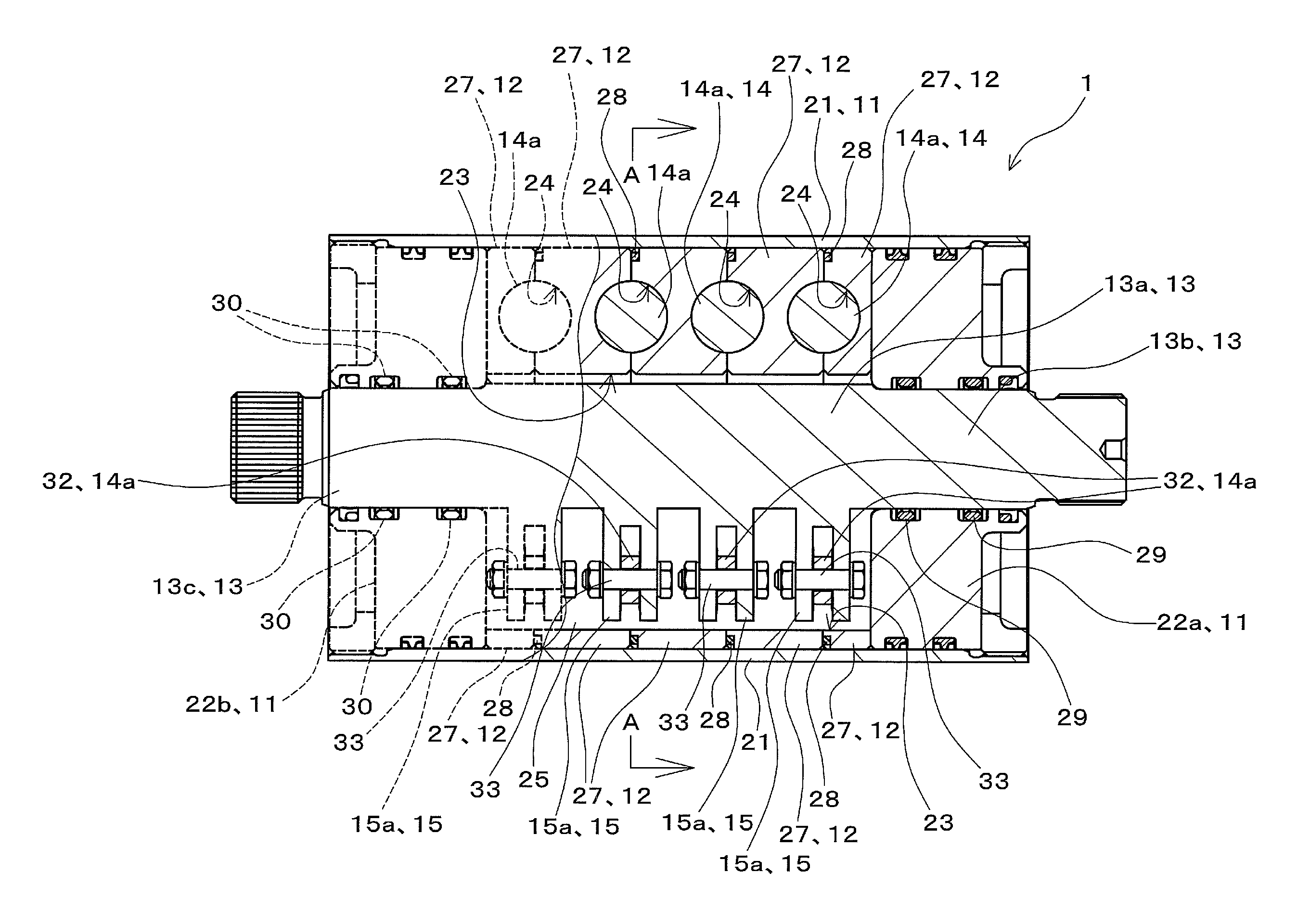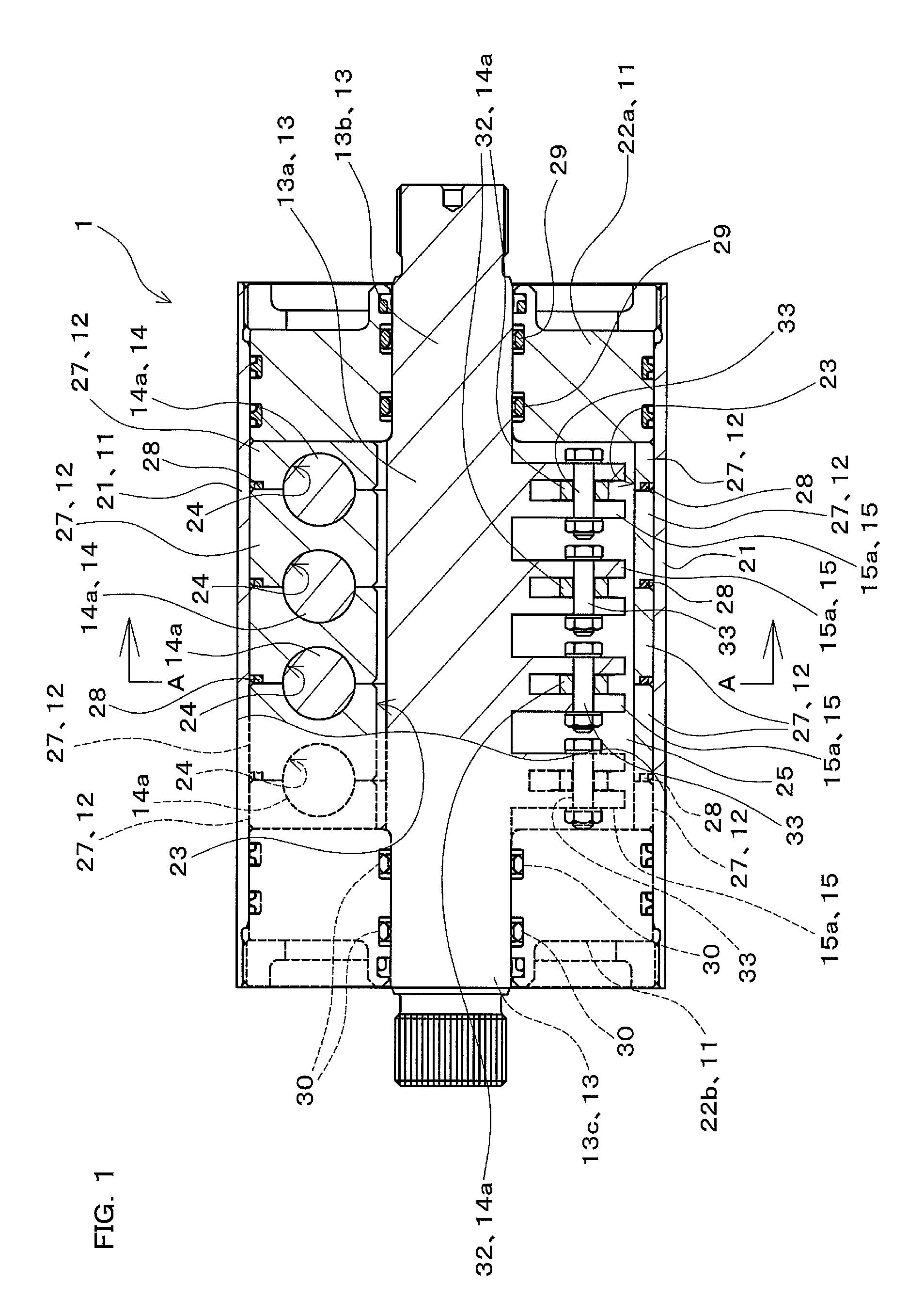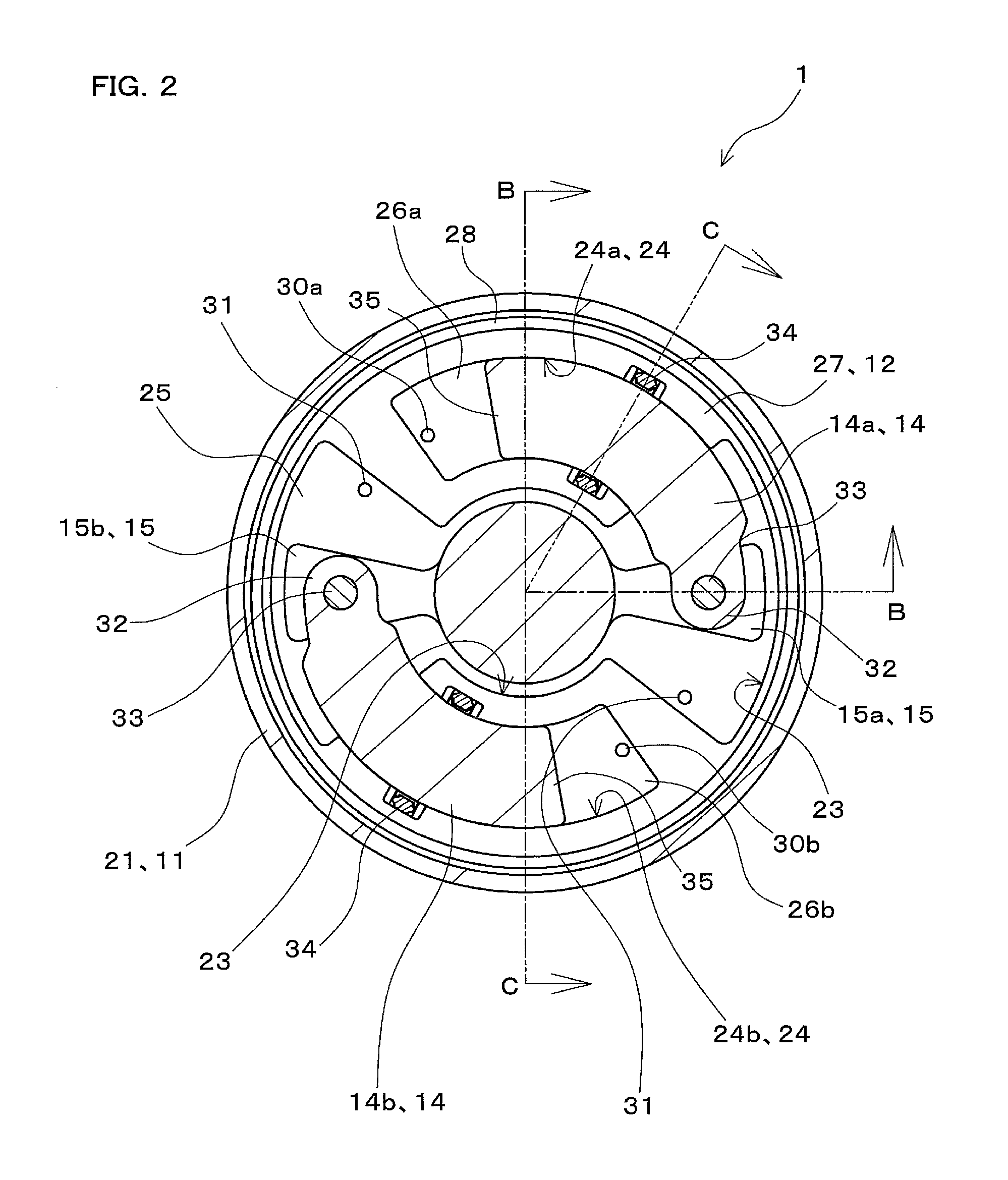Rotary actuator
- Summary
- Abstract
- Description
- Claims
- Application Information
AI Technical Summary
Benefits of technology
Problems solved by technology
Method used
Image
Examples
Embodiment Construction
[0037]An embodiment for implementing the present invention will be hereinafter described with reference to the drawings. Note that the present invention can be applied widely to rotary actuators that output driving torque as a result of output shafts thereof pivoting in a rotational direction due to action of a pressure medium.
[0038]FIG. 1 is a diagram showing a rotary actuator 1 according to one embodiment of the present invention including a partial cross-sectional view thereof, viewed from a direction perpendicular to an axial direction thereof. FIG. 2 is a cross-sectional view of the rotary actuator 1, viewed along arrows A-A in FIG. 1. Note that FIG. 1 includes the cross section viewed along arrows B-B indicated by dashed lines in FIG. 2. FIG. 3 is a diagram showing the rotary actuator 1 including a cross-sectional view thereof, viewed along arrows C-C indicated by two-dot chain lines in FIG. 2.
[0039]The rotary actuator 1 shown in FIGS. 1 to 3 is provided as an actuator that ou...
PUM
 Login to View More
Login to View More Abstract
Description
Claims
Application Information
 Login to View More
Login to View More - R&D
- Intellectual Property
- Life Sciences
- Materials
- Tech Scout
- Unparalleled Data Quality
- Higher Quality Content
- 60% Fewer Hallucinations
Browse by: Latest US Patents, China's latest patents, Technical Efficacy Thesaurus, Application Domain, Technology Topic, Popular Technical Reports.
© 2025 PatSnap. All rights reserved.Legal|Privacy policy|Modern Slavery Act Transparency Statement|Sitemap|About US| Contact US: help@patsnap.com



